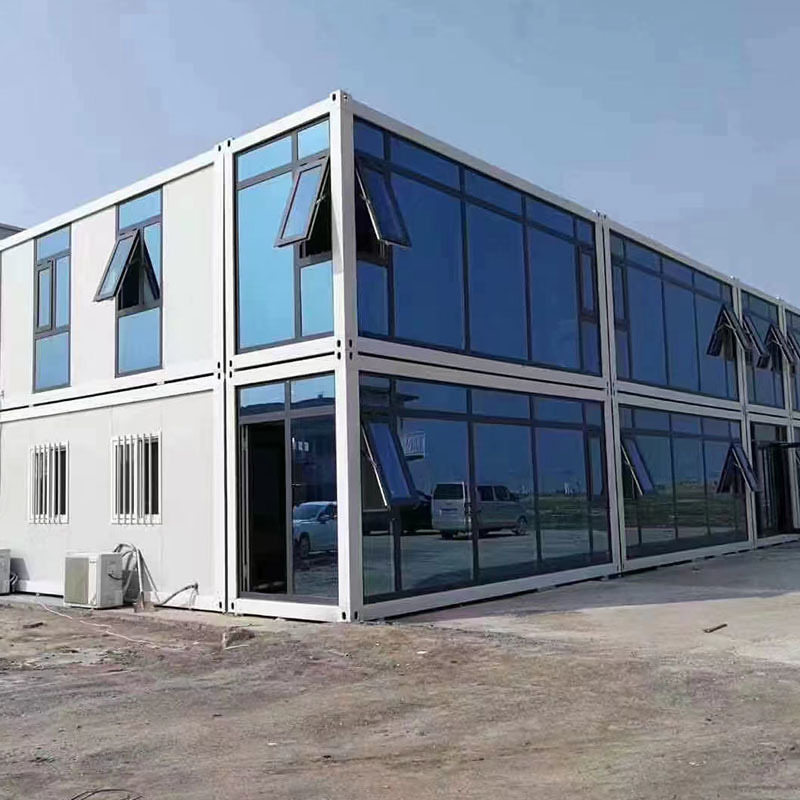Essential Insights for Building a Container Home: A Practical Guide
Release Time:
Apr 20,2025
Building a container home has gained substantial popularity in recent years, particularly among those seeking sustainable and cost-effective housing solutions. This innovative approach to construction not only allows for unique architectural designs but also promotes recycling and repurposing materials. As a professional in the building and decorative materials industry, understanding the nuances
Building a container home has gained substantial popularity in recent years, particularly among those seeking sustainable and cost-effective housing solutions. This innovative approach to construction not only allows for unique architectural designs but also promotes recycling and repurposing materials. As a professional in the building and decorative materials industry, understanding the nuances of container home construction can position you as a valuable resource for clients looking to explore this alternative housing option.
**Understanding Container Home Basics**
Before diving into the specifics, it’s essential to grasp the fundamentals of container homes. These structures are primarily made from repurposed shipping containers, which are durable and designed to withstand harsh conditions. The primary advantage is their mobility and ease of assembly, making them a practical choice for various settings, from urban lots to remote locations.
**Planning and Design Considerations**
When building a container home, planning is critical. First, assess the local zoning laws and building codes, as these can significantly impact your project. Engage with local authorities early in the process to ensure compliance. Next, focus on the design. Container homes can be configured in multiple ways, from single-container structures to multi-container designs that create expansive living areas. Collaborate with architects or designers familiar with container construction for optimal results.
**Insulation and Energy Efficiency**
Proper insulation is vital for maintaining a comfortable environment in container homes, as metal containers can experience extreme temperature fluctuations. Various insulation materials, such as spray foam, rigid foam, or insulated panels, can be used depending on your budget and energy efficiency goals. Additionally, consider integrating renewable energy sources, such as solar panels, to enhance the sustainability of your home.
**Selecting Quality Materials**
Choosing the right materials for both the structural and decorative aspects of your container home can impact the overall aesthetic and durability. For instance, utilize weather-resistant siding materials to protect against the elements, and select high-quality finishes for interiors to enhance livability. As a professional in the industry, you can provide clients with insights into the best materials suited for their specific needs.
**Sustainability and Cost-Effectiveness**
Ultimately, one of the most compelling reasons to build a container home is sustainability. This construction method promotes a reduced carbon footprint by repurposing existing materials. Furthermore, container homes can be more affordable than traditional builds, depending on design complexity and material choices. Provide your clients with detailed cost analyses to help them understand the financial implications of building a container home.
In conclusion, building a container home presents an exciting opportunity for innovation in the construction industry. By understanding the essential aspects of planning, design, and material selection, you can guide your clients in creating a sustainable and functional living space that meets their needs while minimizing environmental impact.
**Understanding Container Home Basics**
Before diving into the specifics, it’s essential to grasp the fundamentals of container homes. These structures are primarily made from repurposed shipping containers, which are durable and designed to withstand harsh conditions. The primary advantage is their mobility and ease of assembly, making them a practical choice for various settings, from urban lots to remote locations.
**Planning and Design Considerations**
When building a container home, planning is critical. First, assess the local zoning laws and building codes, as these can significantly impact your project. Engage with local authorities early in the process to ensure compliance. Next, focus on the design. Container homes can be configured in multiple ways, from single-container structures to multi-container designs that create expansive living areas. Collaborate with architects or designers familiar with container construction for optimal results.
**Insulation and Energy Efficiency**
Proper insulation is vital for maintaining a comfortable environment in container homes, as metal containers can experience extreme temperature fluctuations. Various insulation materials, such as spray foam, rigid foam, or insulated panels, can be used depending on your budget and energy efficiency goals. Additionally, consider integrating renewable energy sources, such as solar panels, to enhance the sustainability of your home.
**Selecting Quality Materials**
Choosing the right materials for both the structural and decorative aspects of your container home can impact the overall aesthetic and durability. For instance, utilize weather-resistant siding materials to protect against the elements, and select high-quality finishes for interiors to enhance livability. As a professional in the industry, you can provide clients with insights into the best materials suited for their specific needs.
**Sustainability and Cost-Effectiveness**
Ultimately, one of the most compelling reasons to build a container home is sustainability. This construction method promotes a reduced carbon footprint by repurposing existing materials. Furthermore, container homes can be more affordable than traditional builds, depending on design complexity and material choices. Provide your clients with detailed cost analyses to help them understand the financial implications of building a container home.
In conclusion, building a container home presents an exciting opportunity for innovation in the construction industry. By understanding the essential aspects of planning, design, and material selection, you can guide your clients in creating a sustainable and functional living space that meets their needs while minimizing environmental impact.
Key words:
What Else Might You Learn?











